
Public Safety Lab
@publicsafetylab
Using data + social science to support communities' efforts to improve equity and efficiency in public safety outcomes. Dir. by @annalilharvey @nyuniversity
ID: 1172674654718373889
http://www.publicsafetylab.org 14-09-2019 00:53:30
293 Tweet
681 Followers
22 Following

Jail populations dipped by ~25% early in the pandemic. They've since rebounded in many places, per Public Safety Lab. That can mean higher taxpayer costs—but not better results (more jail spending ≠ lower crime rates). It’s time for a change. pew.org/3Oi8d04



For 19thnews, Candice Norwood highlights increasing incarceration of women (and particularly Black women) using the New York University Public Safety Lab's Jail Data Initiative dashboard 📉 19thnews.org/2023/01/jail-p…

Is #hotspotpolicing effective? NYU Public Safety Lab's Anna Harvey weighs the research w/ The New York Times' German Lopez: nyti.ms/3JAZLZO

Blistering indictment of current Bureau of Justice Statistics jail data collection, from Tracy Velazquez and Julie Wertheimer of The Pew Trusts: Timely jail data can be a guiding light for the criminal justice system thehill.com/opinion/crimin…

How can we safely reduce jail populations and cut costs? Start by bringing data collection into the 21st century, our Julie Wertheimer and Tracy_V say. Public Safety Lab’s new Jail Data Initiative shows what’s possible. #CJreform pew.org/3XweB70

Jail populations dipped by ~25% early in the pandemic. They've since rebounded in many places, per Public Safety Lab That can mean higher taxpayer costs—but not better results (more jail spending ≠ lower crime rates). It’s time for a change. pew.org/3Eqctq0
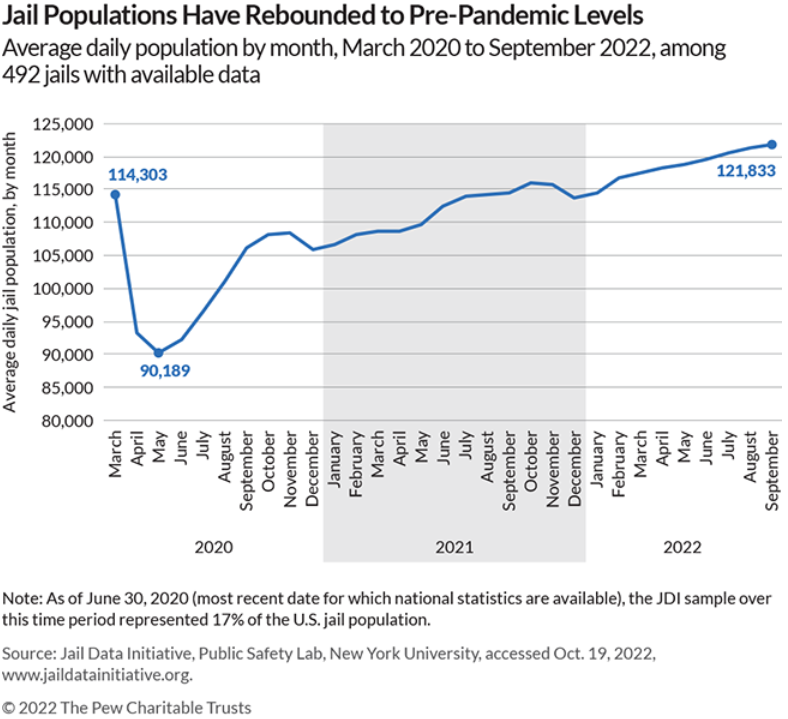



A new report from Pew (Pew States) uses the Public Safety Lab (Public Safety Lab) Jail Data Initiative (Jail Data Initiative) to observe racial disparities in our jails—

Overrepresentation of Black people sent to U.S jails is longstanding. And data from Public Safety Lab's one-of-a-kind tool shows they persist today. pew.org/3BFIw48
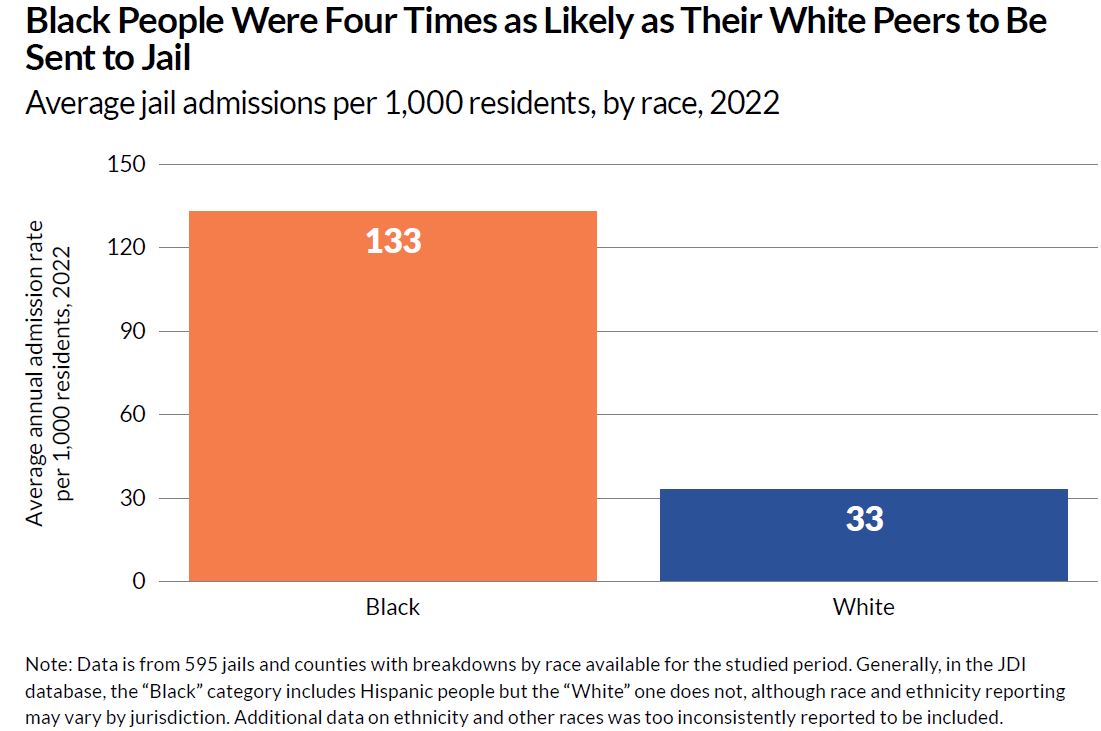

Racial disparities in jails declined in the decade leading up to the pandemic. That may have reversed as COVID-19 spread, according to Public Safety Lab data. pew.org/3BFIw48
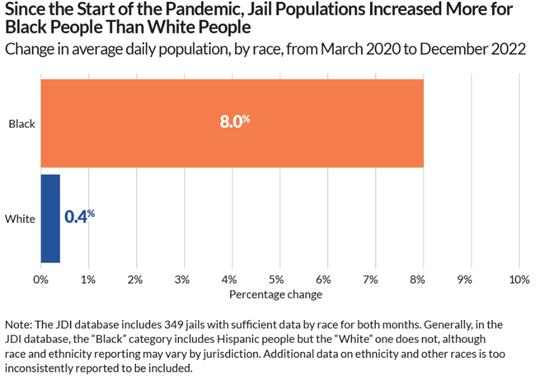

Jail populations dipped by ~25% early in the pandemic. They've since rebounded in many places, per Public Safety Lab That can mean higher taxpayer costs—but not better results (more jail spending ≠ lower crime rates). It’s time for a change. pew.org/3Eqctq0
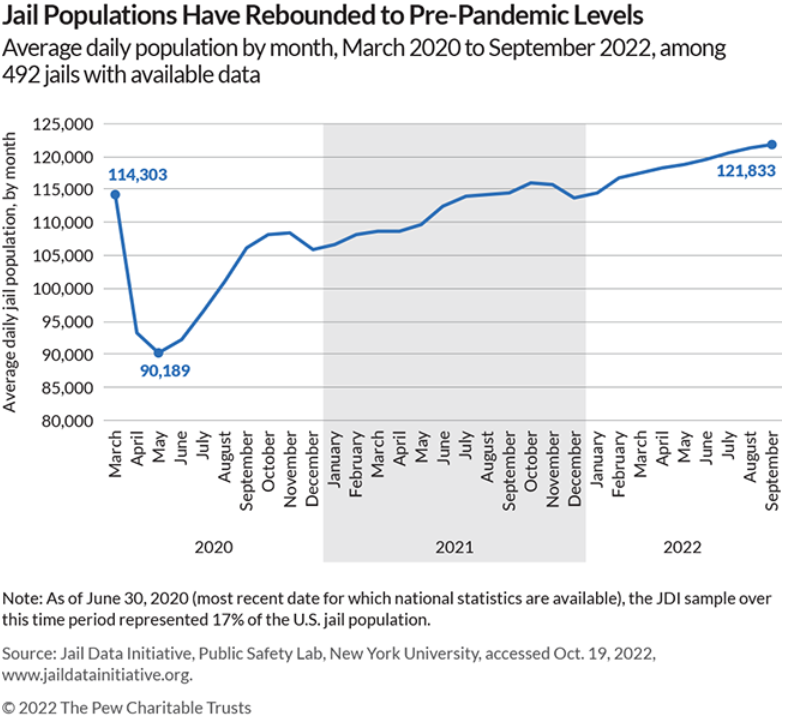

@chadtopaz.bsky.social Orgs I think of as data/research-driven in the CJ space: U Chicago Crime Lab/UChicago Urban Labs, Lab for Economic Opportunities (LEO), California Policy Lab, CJARS, Measures for Justice, Recidiviz, Public Safety Lab, Criminal Justice Expert Panel, and of course Arnold Ventures :)

The Public Safety Lab Jail Data Initiative now contains 9+ million booking records from across the United States. October 2023 daily jail population for a set of 982 rosters representing 1000+ counties below 📉
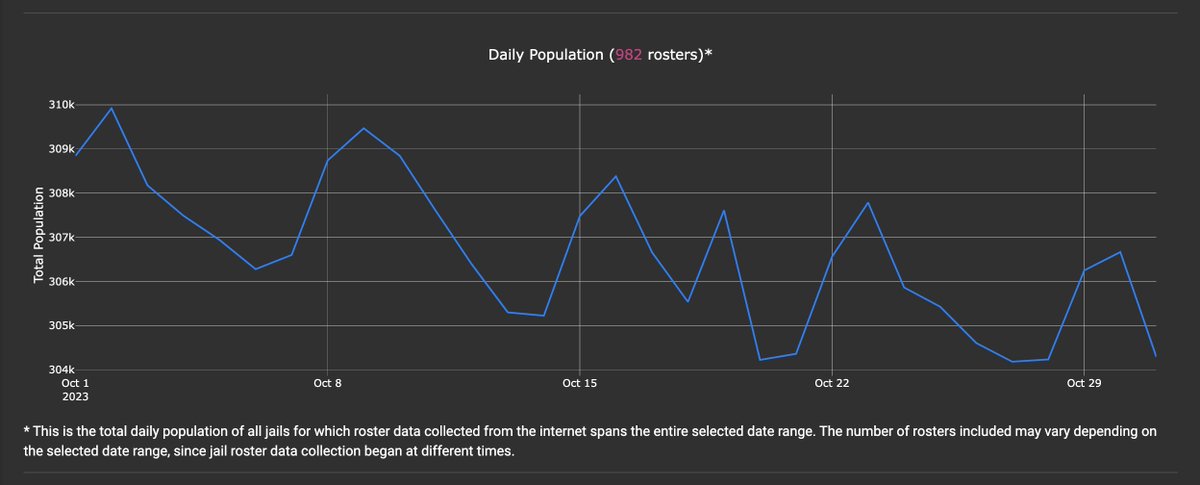

On Sep 5 the US jail population reached its highest level since we began collecting data in Jan 2020. For a sample of 509 jails the daily pop hit 128,323—if we extrapolate using total detention capacity, we can estimate that approx 740,000 people were in jail. Public Safety Lab

Great piece by Arnold Ventures on Jail Data Initiative at Public Safety Lab. Here's an oped by Julie Wertheimer and Tracy_V on how Bureau of Justice Statistics at OJP could leverage this new tool: thehill.com/opinion/crimin…

As of today, the Jail Data Initiative database covers 12 MILLION jail bookings since the beginning of 2020. cc Public Safety Lab Jail Data Initiative


"The Jail Data Initiative offers a sorely-needed alternative source of information about jail admissions and about people who are jailed repeatedly." Check out the first reporting from our collaboration with the Prison Policy Initiative ⤵️ cc Public Safety Lab Jail Data Initiative

The Public Safety Lab's Jail Data Initiative dataset "fills a serious gap in our knowledge about the demographics and charges of people booked into jails, given that comparable data has not been collected or published from the Bureau of Justice Statistics in over twenty years." 📊


